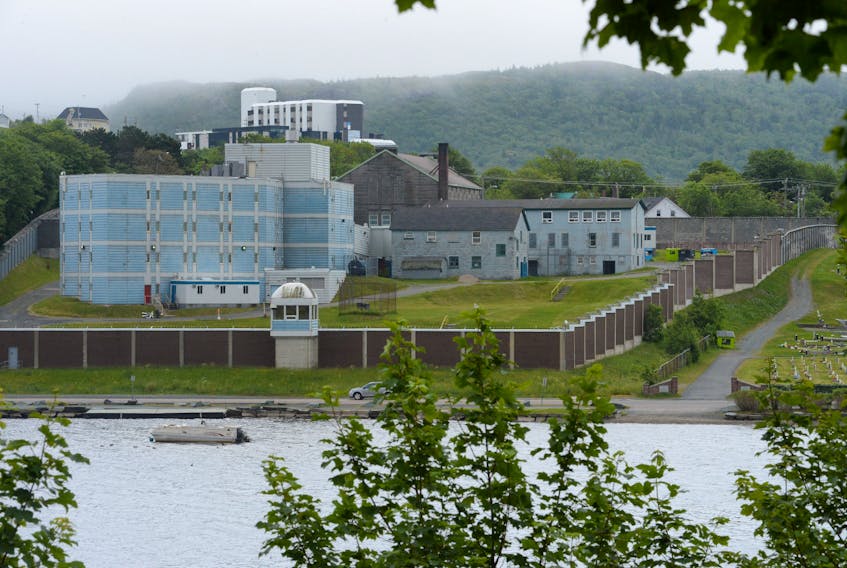If you sit a host of government officials around a table and asked them about Her Majesty’s Penitentiary, they’d likely all say the same thing — the facility needs to be replaced.
But saying it is simpler than getting it done.
Justice Minister Andrew Parsons supports the notion of replacing the outmoded medium/maximum security St. John’s prison, but says while a new facility with bells and whistles sounds great, economic realities have to be taken into account.

“There is a fiscal challenge, as money is a focal point in everything we do,” Parsons said.
“There are places where we require investments, but there are also changes in how we do things, practices that can help. I will never have an issue with best practices.”
Among those best practices is the rehabilitation and reintegration of inmates back into society, a process which has been stymied by the lack of space to offer the array of programs required for a smoother transition back into mainstream life after a period of incarceration.
“HMP has its issues — but nobody wants an institution to be too comfortable,” Parsons said.
“There is a space challenge, as there are too many people in there. Because of the numbers, we know we have to do more to offer and improve the amount of training and therapy… but because of space and staff issues, and the fact the institution is old, it’s difficult,” he acknowledged.

It costs about $110,000 a year to house one inmate at HMP.
Parsons pointed out there are programs aimed at trade skills and real-life training being offered at HMP and at other facilities across the province, including horticultural and woodworking programs. These are done in partnerships with community groups and organizations.
He said there is a greenhouse project at the West Coast Correctional Centre in Stephenville and the Labrador Correctional Centre in Happy Valley-Goose Bay has a trade shop that creates and sells works.
“It’s an awesome program and it won a human rights award for that shop,’’ Parsons said.
Other programs that have shown success include music, art, a library program, construction safety and the intermittent sentencing workshops hosted by the John Howard Society for pre-release inmates in order to prepare them for life back in society.
At HMP, some programs are offered by staff and others in partnership with community groups.
“The programs would not be possible without them and the positive work that gets done,” Parsons said.
They include addictions counselling, healing circles, opioid addictions counselling, peer support programs, meditative yoga, Alcoholics Anonymous and St. John’s Ambulance therapy dogs. There’s also life skills training, career counselling, mental health counselling and adult basic education programs.

“Sometimes we have spirit horses or the therapy dogs — just the presence of these animals, those who are around them feel a sense of calming that comes over them,” Parsons said. “They come from places filled with conflict each day and they are always in a stressful environment. The (animals) are brought in to help inmates deal with those stresses and give them some relief from it.”
He said the mentality of crime and punishment is changing and it’s no longer just “if you do the crime, you do the time,” and rehabilitation cannot be overlooked. Otherwise, “Once they are released, factors see them steered back to the big contributing things that got them incarcerated in the first place,” he said.
Parsons said the work of community groups to help inmates is critical to them not re-offending and being re-incarcerated.
“Take addictions, for example. These people don’t want to be addicted, they want to get better, so they can have a normal life and achieve gainful employment when they are back in society,” he said.
“They don’t want to go back to what got them locked up in the first place. We concentrate on mental health and addictions counselling to help them achieve that.”
Parsons said there aren’t many families in this province who haven’t been touched by these issues.
RELATED ARTICLES:
SPECIAL REPORT: 'HMP is a dismal place'
SPECIAL REPORT: Newfoundland and Labrador inmates speak out about life inside
SPECIAL REPORT: Hellish Medieval Primitive
Pam Frampton: Selling the (Salmonier prison) farm
“The big picture for me is there are so many people in there now, the numbers are going up and up. They have mental health and addictions issues. It will soon be full.
“This is not just a justice issue, but also a health and education issue. There is a need for us to run things with the Department for Health for addictions and mental health.”
He acknowledged the province can do a better job with both inmates and victims of crime.
“Many times, the victims are not considered, and if we look at the system and how we achieve justice, it helps everyone,” he said.









